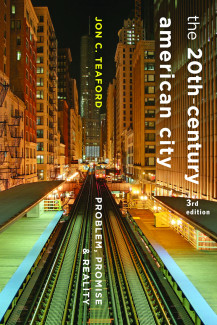
Johns Hopkins UniversityEst. 1876
America’s First Research University
The Continuing Urban Dilemma

Recent news stories of persistent racial tensions in America’s cities have simply highlighted the fact that the nation’s urban areas remain troubled and divided. The rioting following the deaths of Freddie Gray in Baltimore and Michael Brown in metropolitan St. Louis as well as the murder of police officers in Dallas and Baton Rouge all testify to the violence and anger that characterize America’s flawed urban areas. The recent bankruptcy of Detroit and the water crisis in Flint are further evidence of the decline, decay, and social and economic inequality endemic to many American metropolises. Booming metropolitan areas in the South and West are not exceptions to the rule. They too testify to the continuing struggle to create better cities. Rampant suburban sprawl and the possibility of environmental devastation are all too common byproducts of Sunbelt growth. In 2016 as in 1916 the need to improve metropolitan life is a pressing national problem.
In my revised and enlarged study The Twentieth-Century American City: Problem, Promise, and Reality, I put the continuing urban dilemma into historical perspective by tracing twentieth-century struggles to improve American cities. Too often policymakers and the general citizenry confront the problems of the present without a sufficient understanding of the origins and antecedents of the current scene. The past explains the present; without this historical explanation a serious understanding of the contemporary world is impossible. My book is intended to provide that explanation.
When I wrote the first version of this work in the 1980s, the urban crisis of the 1960s characterized by recurrent civil disorders and soaring crime rates was fresh in the minds of prospective readers. During the ensuing decades the details of the continuing urban story have changed, but the metropolitan dilemma has persisted. In the twenty-first as in the twentieth century, urban commentators and city boosters have presented tales of urban renaissance and proclaimed once-beleaguered hubs as comeback cities. Yet today as in the 1970s, 1980s, and 1990s, the rosy reports share space with recurring accounts of social conflict and urban failure. Stark contrasts between promises and realities characterized thinking about America’s cities throughout the twentieth century and this remains true of the twenty-first century as well. In The Twentieth-Century American City I seek to offer the contemporary reader an insight into what has troubled urban Americans in the past, what remedies and panaceas have been applied, and what has been the result. With this historical perspective readers of today should better understand the metropolitan world around them, appreciating the achievements of the past and recognizing the persistent flaws.
Jon C. Teaford is professor emeritus of history at Purdue University. He is the author of Rough Road to Renaissance: Urban Revitalization in America, 1940–1985, The Metropolitan Revolution: The Rise of Post-Urban America, and The American Suburb: The Basics. His book, The Twentieth-Century American City: Problem, Promise, and Reality, now in its third edition, is available now. 


